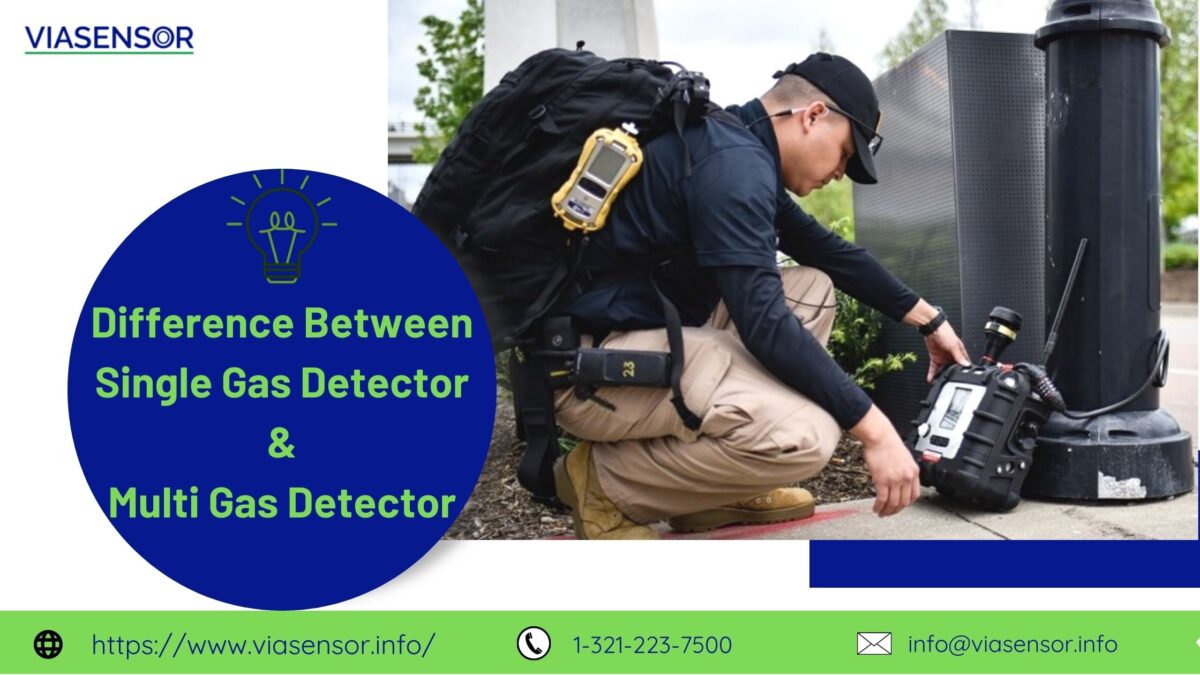Gas detectors are one of the most important components used in industries for preventing harmful gas leaks. Components such as single and multi gas detectors are used to detect methane gas leakages in the system so that poisonous gases are not released into the environment, posing a risk to the workers on the floor. As soon as the system detects any gas leaks, the alarm in the gas detectors goes off, alerting the whole floor personnel to the risk. As a result, the security crew rushes to the leaking location and begins evacuating individuals as rapidly as possible, avoiding any catastrophic mishaps. You choose a single or a multi-gas detector as per your requirements and we will be discussing the noticeable differences between the working and usage of both the industrial gas detectors in this article.
Importance of gas detection in industries
Toxic, combustible, or asphyxiating gases are the three types of gas risks. In wastewater treatment plants, petrochemical processing facilities, and a variety of other sectors, researching the potential gas risks in a given application is an important component of ensuring employee safety. Companies must stay attentive when specific gas dangers have been identified in a given area and all available steps have been implemented to prevent the likelihood of harmful gas buildup or gas leaks. Gas detectors, both permanent and portable, are critical life-saving instruments that must be utilised appropriately in every area where a gas risk exists.
Technology used in Gas Detectors
Gas detection technology is extremely versatile, with a large range of general and customised detectors to suit practically any application.Devices fall into one of two categories: fixed or portable. Portable gas detectors are tiny enough to be worn on clothes or linked to a lanyard or belt. Since they are portable, they continuously monitor one or more target gases and alert the user by vibration, auditory alarm, and/or flashing lights when gas concentrations exceed a predetermined level. Fixed gas monitors are used in high-risk areas and provide improved precision, as well as data logging and gas concentration measuring capabilities.
Difference between Single and Multi Gas detectors
A Single Gas Detector, as the name implies, can detect and monitor only one gas. A single gas detector will be able to detect any of the various gases present in the plant vicinity, such as carbon monoxide, ammonia, sulphur dioxide etc and will warn the system if any leaks happen in the surrounding area. One of the most significant advantages of these gas detectors is their minimal weight and compatibility, which allows the worker to connect it to his belt or helmet and continue working. There are many types of single gas detectors available in the market and each one comes for a specific gas detection. The greatest example of a single gas detector is a methane detector.
A Multi-gas sensor or a detector, on the other hand, is utilised for multi-gas monitoring since they can detect numerous gases in the area. Multi gas detectors are less portable than single gas detectors, although they are still small and light. The main drawback of their compactness is that they feature a huge screen display, making the whole structure unwieldy and difficult to transport. They feature larger displays since they can read and display up to six gas readings at once. Because of their many gas detection capabilities, they are incredibly convenient to transport to the facility, although they are not as portable as single gas detectors.
Which gas detector do you need? Single or multi?
When it comes to determining which detector is appropriate for a person or sector, there is a lot of overlap. Fire and hazmat services, for example, can utilise one or both types of detectors. When these personnel are dispatched to a call, they usually have some grasp of the problem and may replace their monitors. Carbon monoxide detectors are the most prevalent gas encountered by firefighters on routine calls, and a single monitor may be worn on their uniforms. Similarly, because the types of possible toxins are known to employees and facility operators, a single gas detector may be all that is required at refinery facilities and the furniture, woodworking, and painting sectors.
Mining, fumigation, water and wastewater treatment, chemical plants, petrochemical refineries, pharmaceuticals, labs, and medical, carpet manufacturing, and heat treatment activities are among businesses that should investigate single gas detectors.
Multi-gas detectors, on the other hand, are a better match for larger-scale construction projects, especially when dismantling ancient structures, because you frequently don’t know what’s below a structure. Due to the wide spectrum of poisons that may be present, circumstances such as undiscovered leaks, arson, and landfill monitoring frequently necessitate the usage of a multi-gas detector. Oil, gas, fuel storage, and coal manufacture all produce numerous gases that must be monitored on a regular basis.
Things to consider before selecting gas detectors
There are few things that you must consider while you are selecting the gas detector for your industry and those are listed below in brief
- Before choosing the correct gas detector, you should be fully informed of the dangers you face, as this will help you identify the needs.
- It is critical that you understand the functionality and operation of both gas detectors before deciding which one is best for you. This will simplify your selection because you will be able to connect your needs to the gas detector’s operation.
- Talk to the staff and see what they have to say. They may be accustomed to a certain type of gas detector and be hesitant to accept and use a new one, so talking about it and explaining the benefits may help them feel more at ease.
- Always look into all of your possibilities before deciding on the best one for you. Exploring numerous options will not only help you understand how they function, but it will also help you choose the best option among the others.


